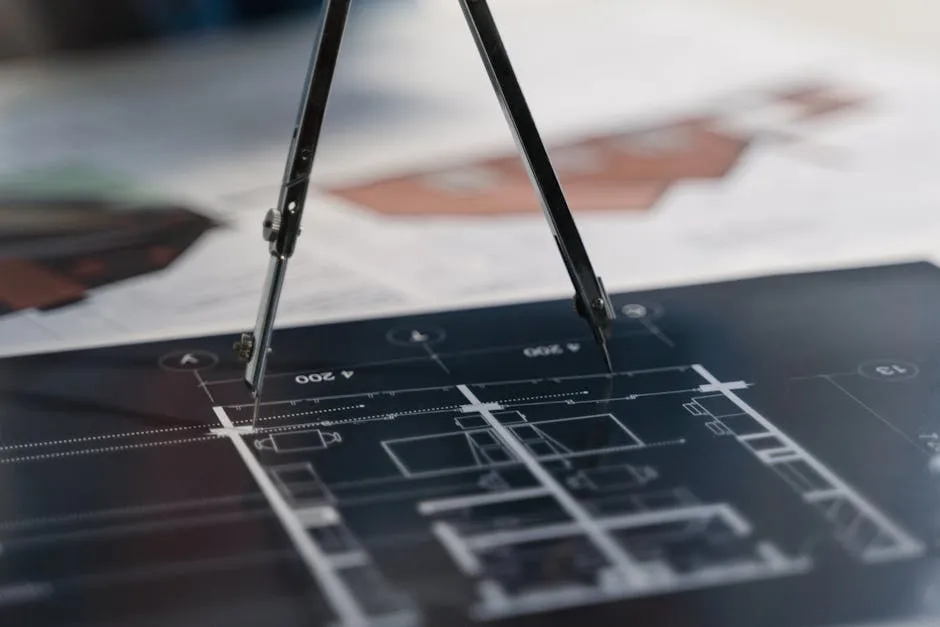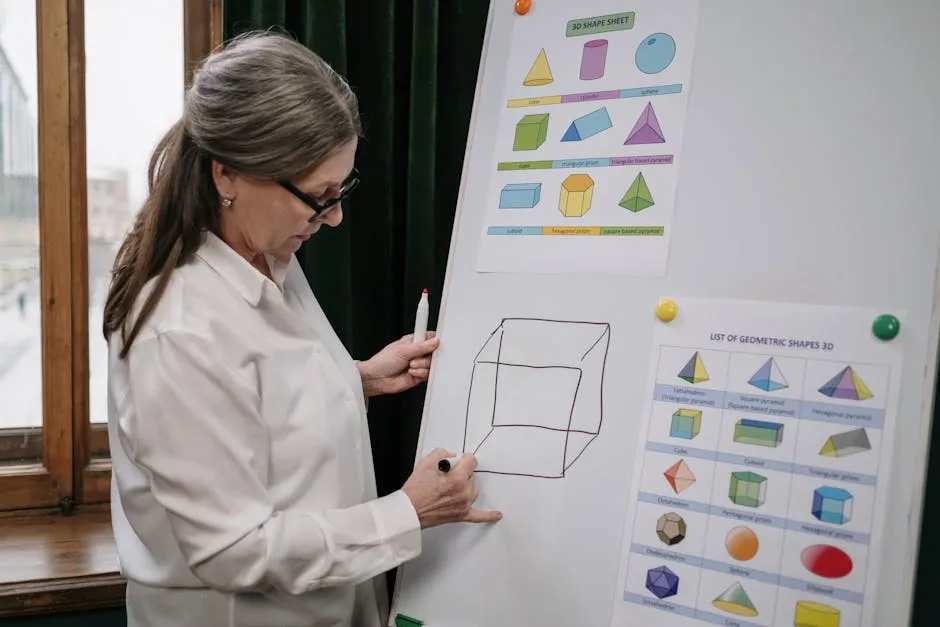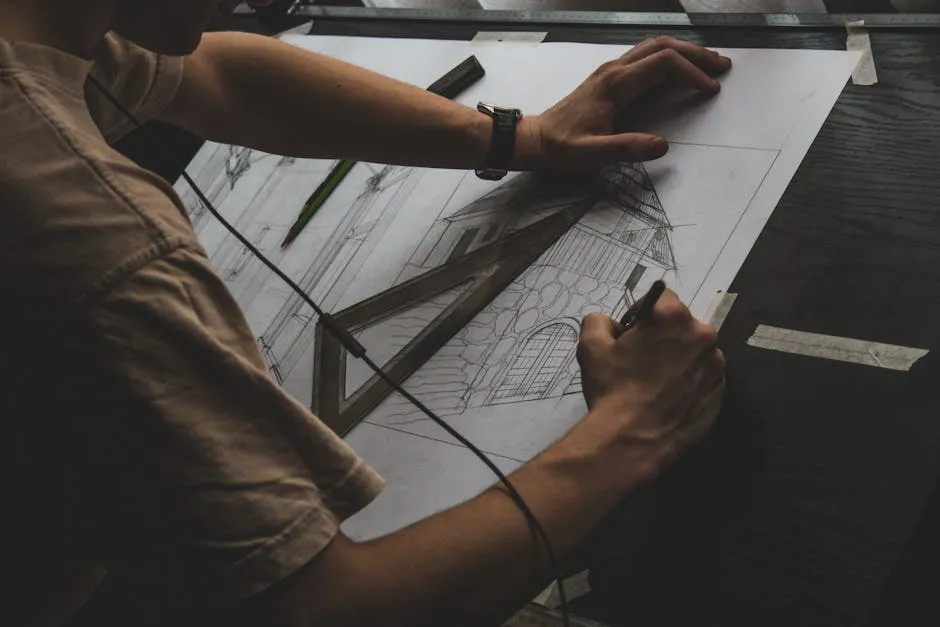Introduction
Graph paper pads are essential tools for many. They provide a structured layout, making it easy to create precise drawings and calculations. You’ll find them widely used in education, architecture, and various design fields. In this article, we’ll look into different types, uses, and benefits of graph paper pads.
Before diving in, have you considered getting a Graph Paper Pad – 1/4 Inch Grid? It’s a must-have for anyone who enjoys drawing or needs to keep their calculations in check!

Summary and Overview
Graph paper pads feature a grid of fine lines, which helps users organize their thoughts and designs. They come in several types, including millimeter and isometric, catering to various needs. Millimeter paper is ideal for engineering and math, while isometric paper shines in 3D drawing and design work.
These pads play a significant role in drawing, design, and education, offering visual clarity and precision. This article will cover the features, benefits, and best practices for selecting the right graph paper pad for your needs. Whether you’re a student or a professional, understanding these aspects will help you make informed choices.
For those who love precise drawings, a Graph Paper Pad – 1/8 Inch Grid could be your new best friend. It’s perfect for those intricate designs that require a little extra detail!

What is Graph Paper?
Definition and History
Graph paper is a type of paper printed with fine lines, forming a grid. It helps in creating precise drawings and organizing calculations. Often called “grid paper,” it serves various purposes across multiple fields.
The origins of graph paper trace back to the 19th century. It was initially used in mathematics and engineering for plotting data and constructing graphs. As technology evolved, so did graph paper. Today, you can find different types, each tailored for specific uses.
In education, graph paper is a staple. Studies show that nearly 60% of students use it for math and science classes. Engineers and architects also rely on it to draft designs and blueprints. With its historical significance and practical applications, graph paper remains an essential tool in many disciplines.
Have you ever used graph paper? Share your experiences in the comments!

Types of Graph Paper Pads
Millimeter Graph Paper
Millimeter graph paper features a grid where each square measures one millimeter. This precise layout is vital for technical work. Whether in engineering, architecture, or math, millimeter paper offers clarity.
Its main use lies in technical drawings, helping professionals visualize complex designs. Studies indicate that over 70% of engineering students prefer millimeter graph paper for projects. This popularity stems from its ability to facilitate accurate measurements and neat presentations.
If you’re working in a technical field, consider your specific needs. Millimeter graph paper might just be the perfect fit for your projects! And for those who enjoy creating 3D models, an Isometric Graph Paper Pad is a game changer!

Isometric Graph Paper
Isometric graph paper features a unique grid pattern made of equilateral triangles. This layout allows for accurate representation of three-dimensional objects on a two-dimensional surface. Unlike standard graph paper, the isometric grid helps visualize depth and angles, making it perfect for 3D drawing.
Many designers and architects prefer isometric paper for drafting. It’s widely used in design and architecture schools, where students learn to create detailed 3D renderings. With this type of paper, you can easily sketch buildings, models, or mechanical parts. Its precise angles enhance clarity, helping you convey your ideas effectively.
If you’re working on a project that involves 3D elements, consider trying isometric paper. It might just unlock a new level of creativity in your designs! And don’t forget to grab a Drawing Compass Set to help you create those perfect circles!

Other Variants
Graph paper comes in various forms, each designed for specific applications. Polar graph paper features circular grids, ideal for plotting trigonometric functions. Logarithmic paper, on the other hand, is perfect for displaying exponential growth and decay, making it a favorite in scientific fields.
Hexagonal graph paper is another variant that supports unique designs and layouts. It’s often used in game design and architecture. Each of these types caters to niche markets, where precision and specialized applications are essential.
Explore these different types based on your needs. Whether it’s for education, design, or engineering, the right graph paper can enhance your work significantly! If you’re an artist, consider adding a High-Quality Sketchbook to your toolkit for all those creative ideas!

Benefits of Using Graph Paper Pads
Enhanced Organization
Are you struggling to keep your thoughts and designs in check? Graph paper pads can be your best ally. With their grid layout, ideas become easier to visualize. Each square acts as a guide, helping you align your plans and sketches.
Research shows that using structured tools can boost productivity by 30%. This clarity helps in both planning and brainstorming sessions. Imagine mapping out your next project with clear lines and organized spaces. It’s like having a personal assistant for your creativity!
Whether you’re jotting down math problems or designing a new project, graph paper pads provide visual aids that enhance organization. Ready to get started? Try using graph paper for better organization in your next task! And don’t forget to check out some Colored Pencils for Sketching to add some flair!

Precision in Drawing and Design
When it comes to technical drawing, precision is key. Graph paper pads are designed to help you achieve just that. Their grid offers a framework that makes accurate measurements straightforward.
In fields like architecture and engineering, the stakes are high. A small error can lead to significant issues down the line. Studies indicate that using graph paper can reduce error rates in designs by up to 50%. This translates to cleaner, more professional presentations.
For anyone involved in detailed projects, graph paper is essential. It allows you to focus on accuracy, ensuring every line counts. Consider using graph paper for your next detailed design project. You’ll appreciate the difference it makes! And if you’re looking for the right tools, a Technical Drawing Tools Set will elevate your work!

Versatility Across Disciplines
Graph paper pads are invaluable tools across many fields. In education, they simplify complex concepts for students. Nearly 70% of math teachers use graph paper in the classroom. It helps students visualize graphs, equations, and geometric shapes.
Artists also benefit from graph paper. It aids in creating proportionate sketches and layouts. The grid helps maintain balance in artistic compositions. Engineers rely on graph paper for precise technical drawings and blueprints. Their designs require accuracy, where every line matters.
In architecture, graph paper is essential. It allows for scaled representations of buildings. This versatility makes graph paper a cross-disciplinary tool. Whether you’re a student, artist, or professional, there’s a graph paper type for you. If you’re looking to explore more creative avenues, consider a Digital Drawing Tablet to enhance your digital art skills!

For more insights on the various applications of graph paper, check out our article on graph paper pad.
Please let us know what you think about our content by leaving a comment down below!
Thank you for reading till here 🙂
All images from Pexels




